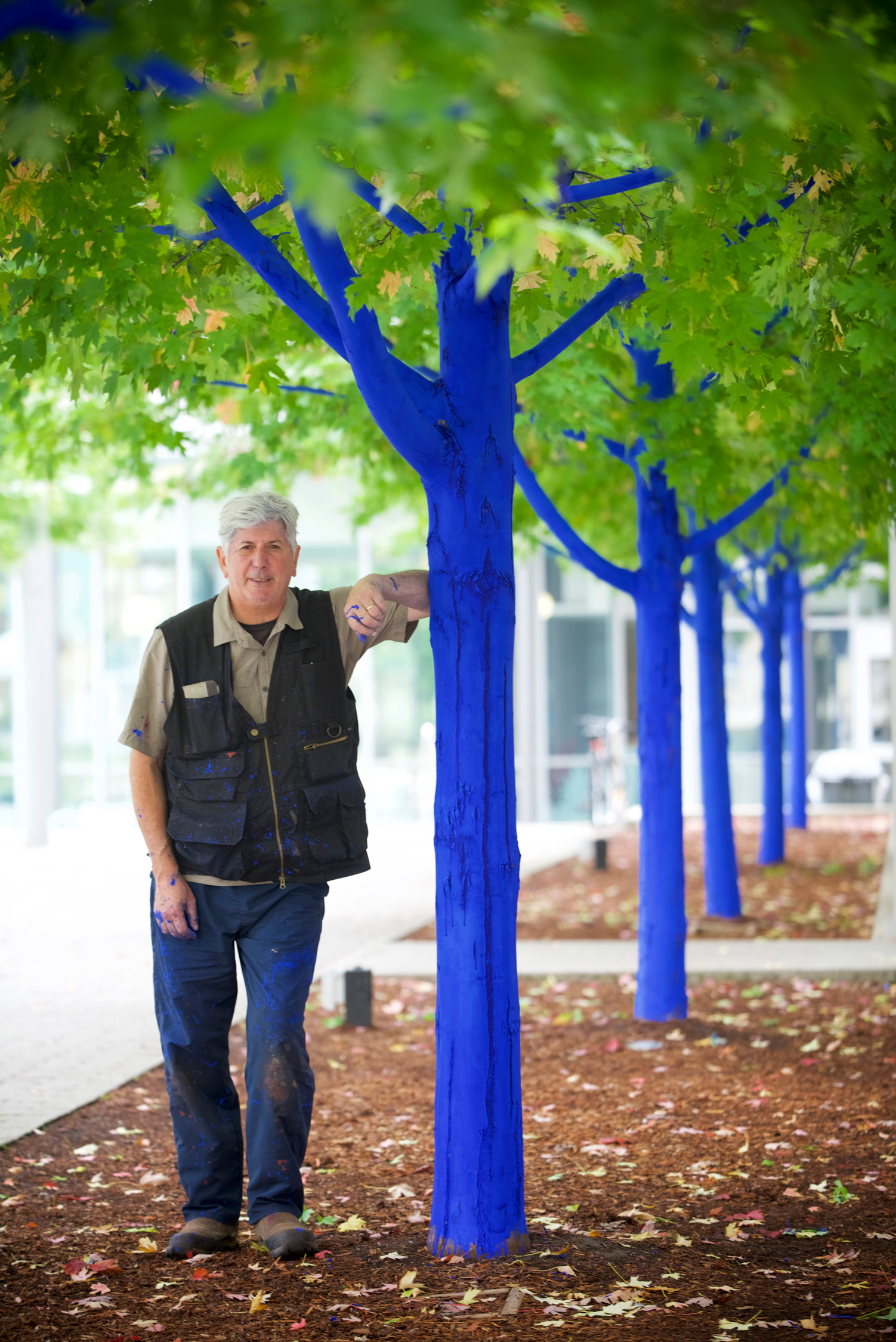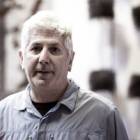
MANCHESTER, NH – The Currier Museum of Art has commissioned artist Konstantin Dimopoulos to create an environmental community art installation, The Blue Trees. With the help of community volunteers, Dimopoulos will temporarily transform nearly 100 trees at the museum and in nearby parks by coloring trees with an environmentally-safe pigment in a striking ultramarine. The installation aims to stimulate awareness and discussion of global deforestation, engage the community in art activity and dialogue, and forge a connection between the museum and downtown. The Blue Trees will remain blue for six to nine months before gradually reverting to their natural state.
Want to get involved? The public is invited to help the artist color trees blue at the Currier Museum! Join us on Sunday, September 30 (11 a.m. to 3 p.m.) for a FREE Community Fun Day. Activity also will include art-making, live music, food trucks, poetry, and more. Rain date is October 7. Click here for more information.
The Blue Trees: Frequently Asked Questions
What is The Blue Trees?
The Blue Trees is an environmental community art installation by Konstantin Dimopoulos in which trees have been temporarily transformed with environmentally safe blue pigment to stimulate awareness and discussion of global deforestation, while engaging the community in art activity and dialogue.
Is the color safe?
The artist uses a biologically-safe watercolor specifically developed for this art installation. It is harmless to all flora, fauna, insects, waterways, and humans. The Blue Trees uses the powerful concept of transformation to raise awareness about the importance of trees to people and their environment. As a transitory artwork, the trees will gradually revert to their natural state.

Why blue?
The artist created a unique shade of blue because “there are no naturally blue trees.” The artist believes that the color will draw people’s attention to the trees and create dialogue about why they are blue, why trees are important, and why art is important.
How long will the trees be blue?
Based on the bark of the trees being colored and the weather in New Hampshire, the trees will be blue for six to nine months.
Why were these trees chosen?
Trees around the Currier Museum, Victory Park, and Pulaski Park were chosen based on their proximity to the museum, the health and bark of the trees, and the artist’s vision for which groups of trees would create a visual impact once colored blue.
Why is the Currier exhibiting The Blue Trees?
The Currier Museum is committed to connecting people with art, expanding our gallery spaces into the broader community. In this sense, an installation as visibly powerful as The Blue Trees will:
- Generate an understanding of the power of art and how it can address social issues
- Increase awareness of the need for neighborhood enhancement
- Foster cultural and community connectedness
- Create a stronger connection between the city’s cultural institutions and downtown
Does New Hampshire worry about deforestation?
While the type of global deforestation that inspired the artist’s original vision for The Blue Trees is not a major concern in New Hampshire today, it has been a part of the state’s history. Currently, the biggest issue facing New Hampshire forests is fragmentation, the subdivision of larger contiguous forests into smaller, disconnected lands, normally done so by roadways or other human intervention. This creates several issues affecting the health of these lands and the creatures who inhabit them. Click here for more information on New Hampshire’s forest.
About the artist
 Konstantin Dimopoulos is an Egyptian born conceptual and social artist whose art practice is grounded in his sociological and humanist philosophies. His powerful and often thought provoking art-making practices investigate globally relevant questions related to ecology and the human condition. Read more here.
Konstantin Dimopoulos is an Egyptian born conceptual and social artist whose art practice is grounded in his sociological and humanist philosophies. His powerful and often thought provoking art-making practices investigate globally relevant questions related to ecology and the human condition. Read more here.







